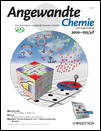Carpe Diubiquitin†
L.J.M. dankt den NIH für ein Promotionsstipendium (F32 GM087097). Unsere Arbeiten zur Proteinchemie werden durch Fördermittel der NIH (R01 GM044783) unterstützt.
Graphical Abstract
Viele Wege führen zum Ziel: Ubiquitinierungen verlaufen über die Bildung einer unüblichen Isopeptidbindung zwischen dem ε-Stickstoffatom eines Lysinrestes im Zielprotein und der C-terminalen Carboxygruppe von Ubiquitin. Mehrere komplementäre Syntheseansätze haben die Herstellung von Diubiquitinketten in Mengen ermöglicht, die für Struktur-Funktions-Analysen taugen, und fanden ihren Höhepunkt in der chemischen Totalsynthese aller sieben Diubiquitinketten.





